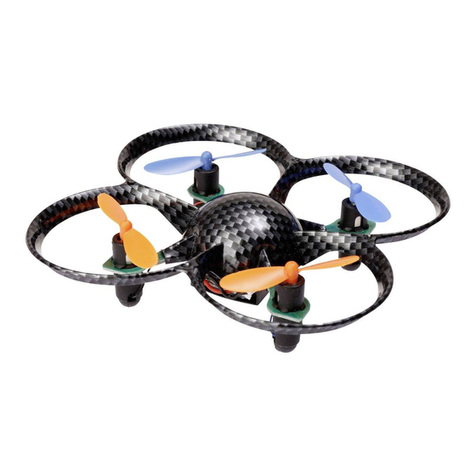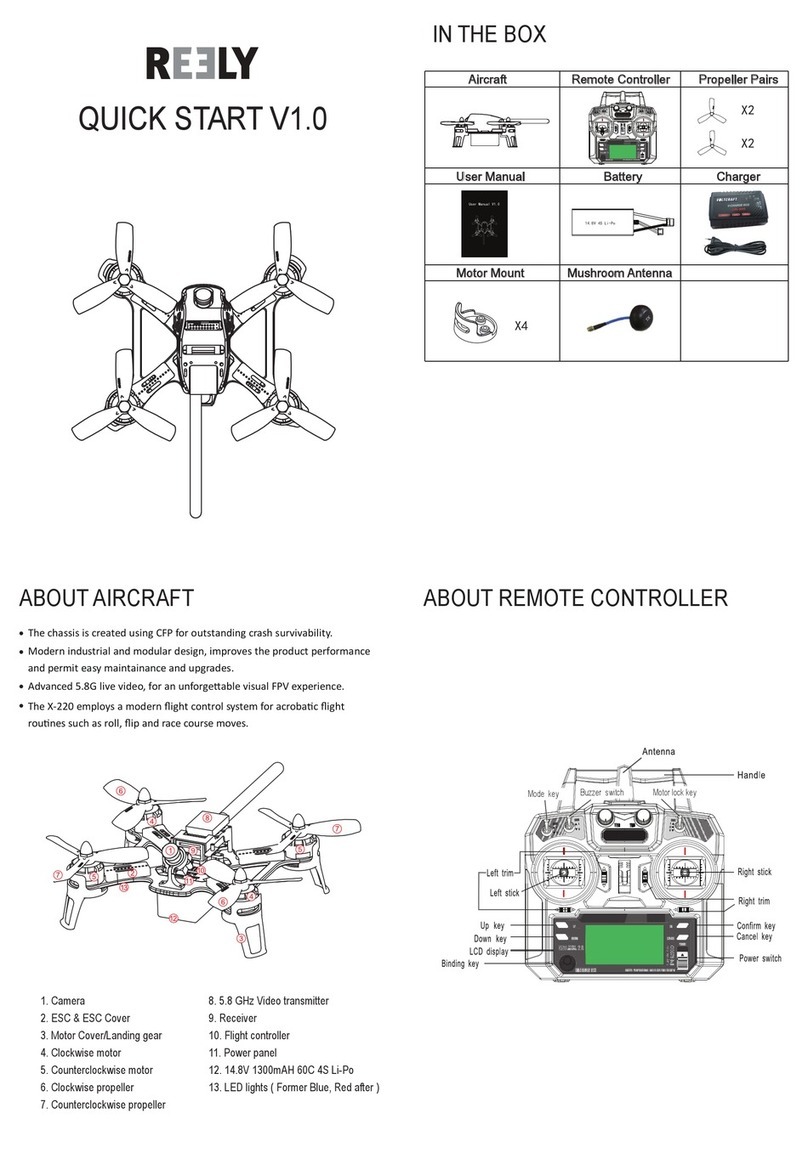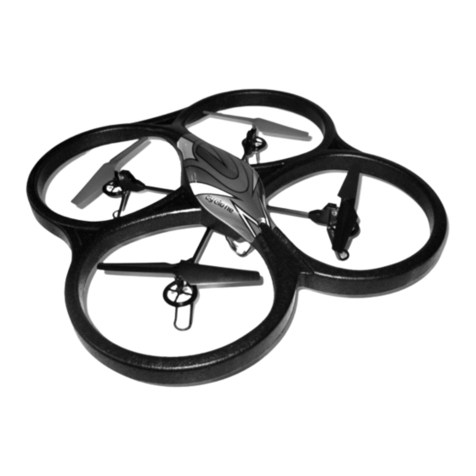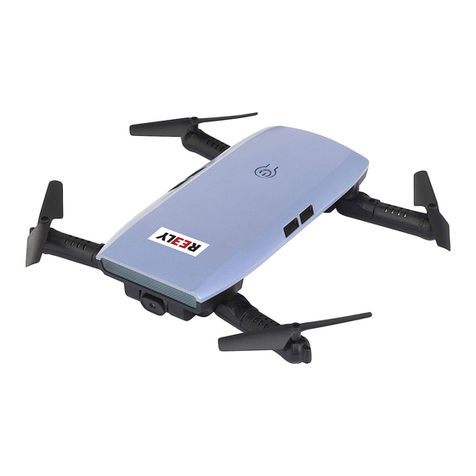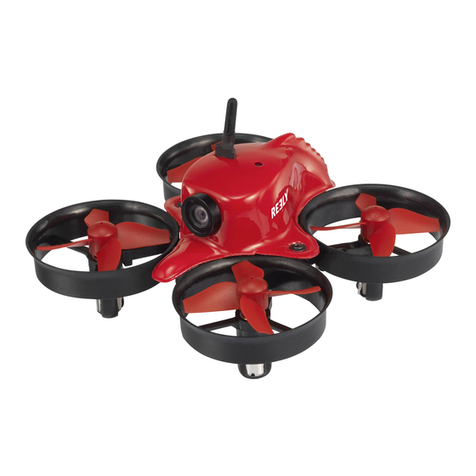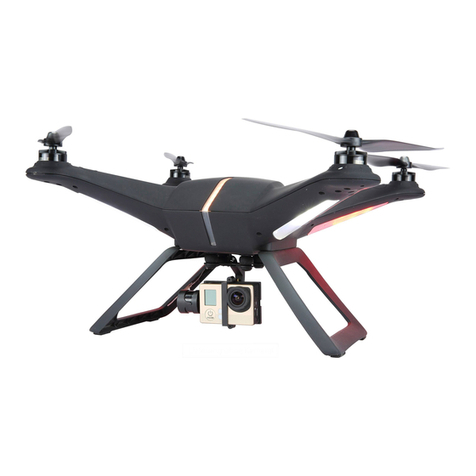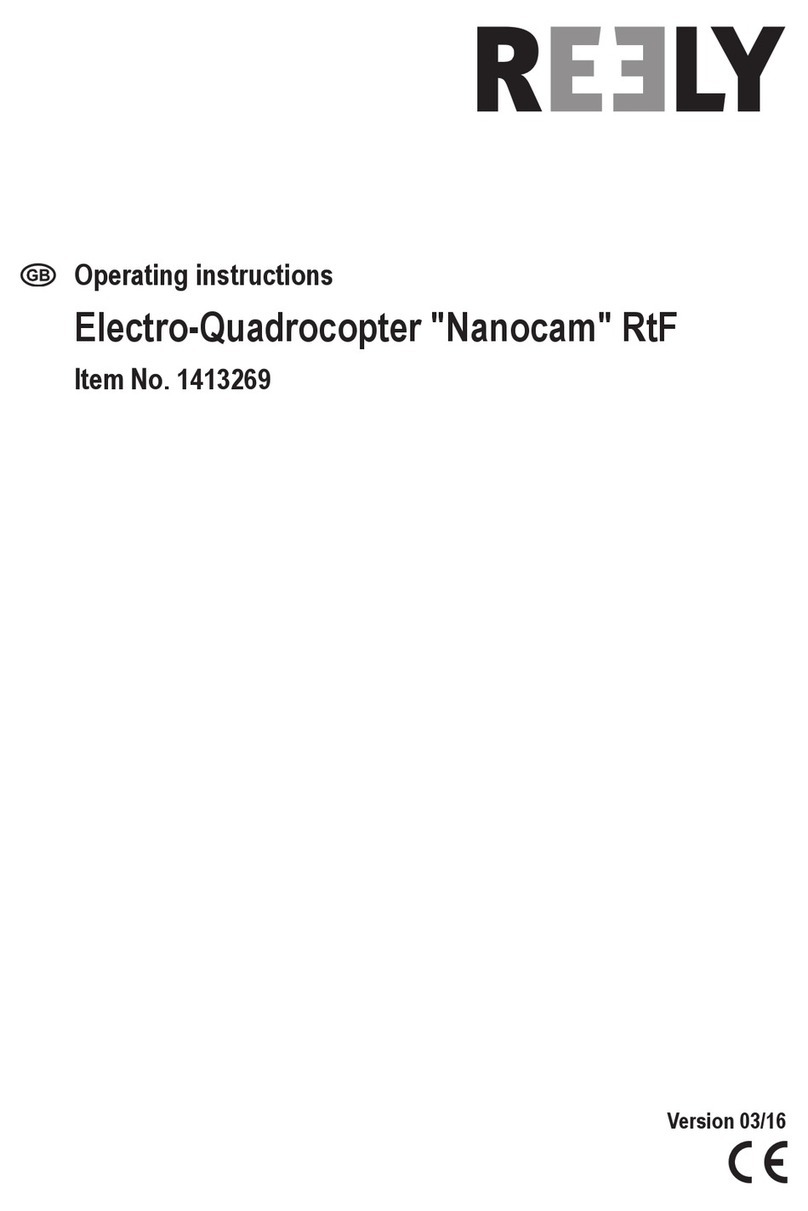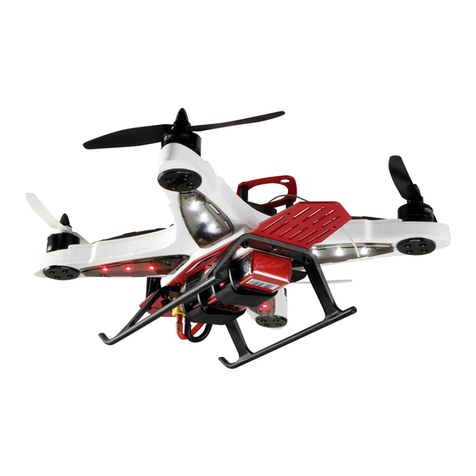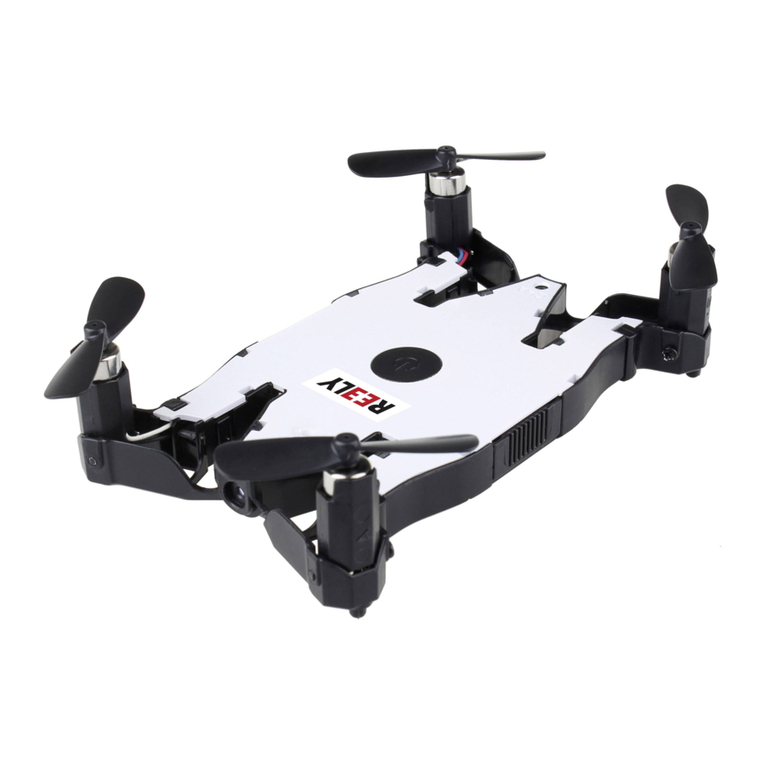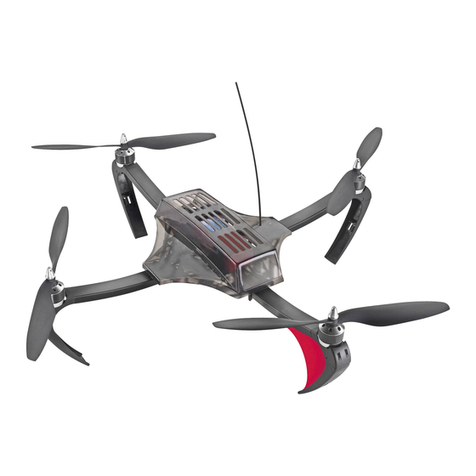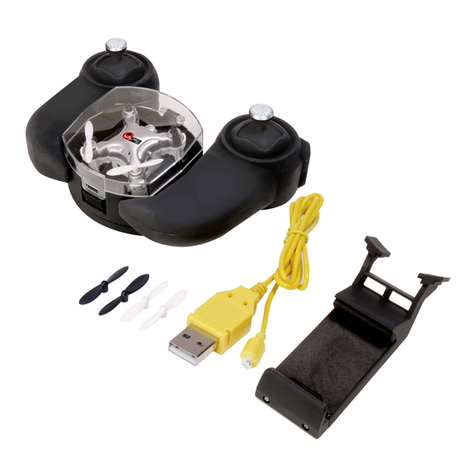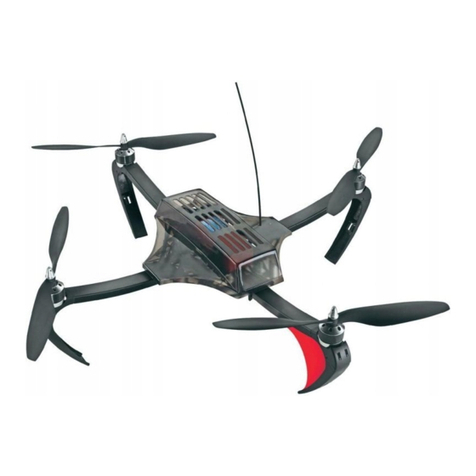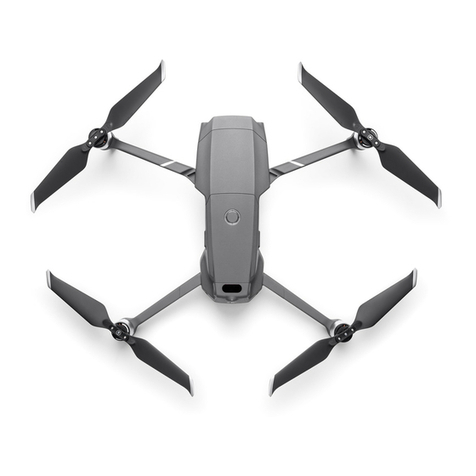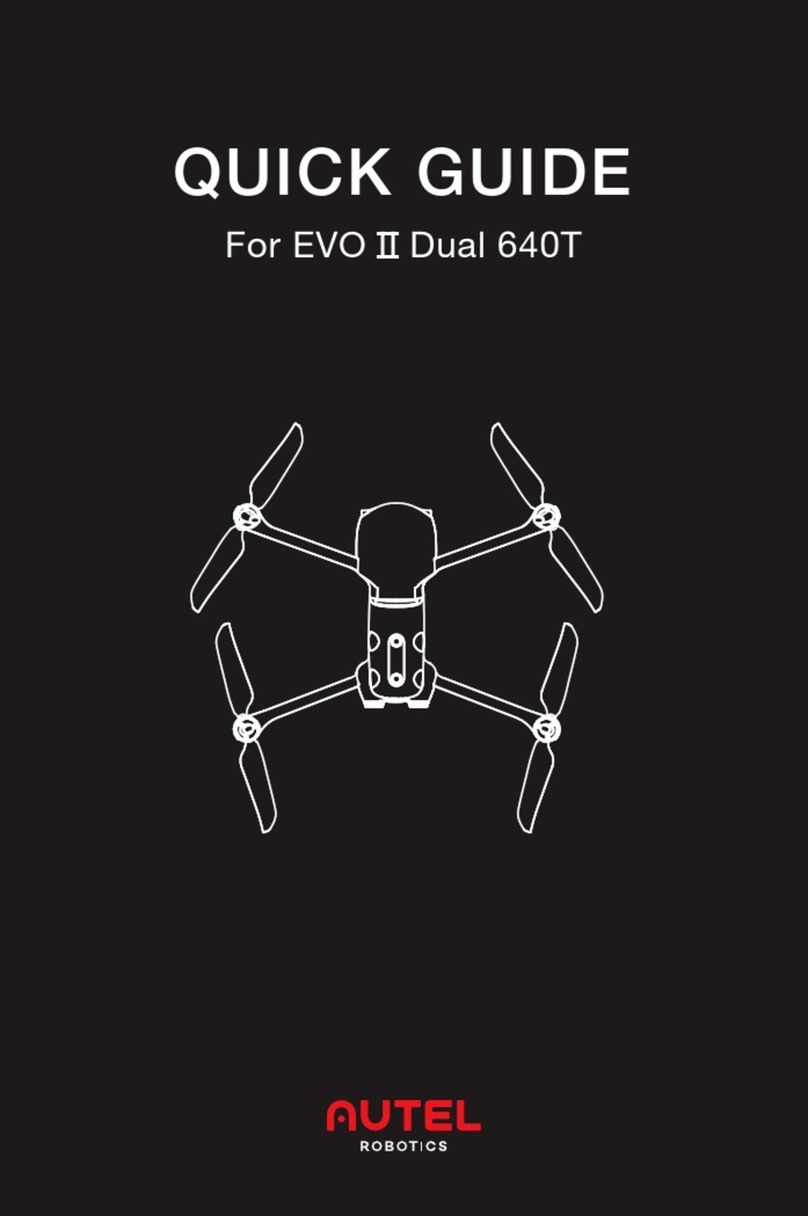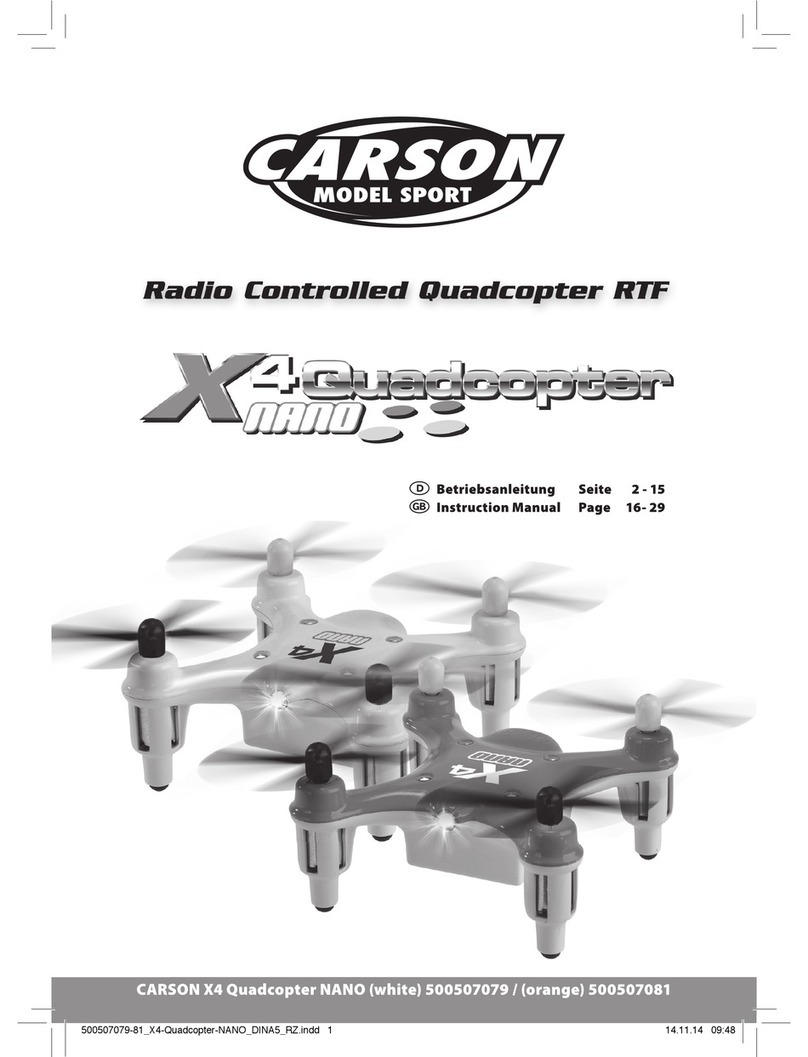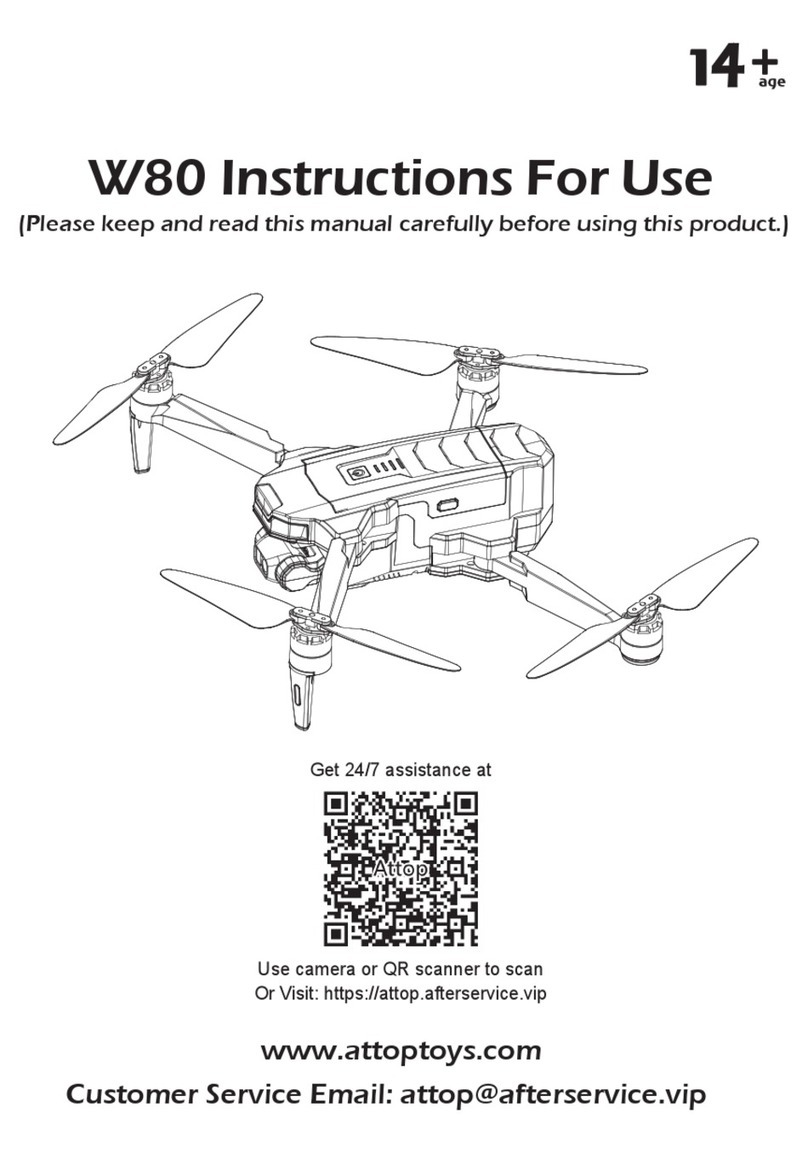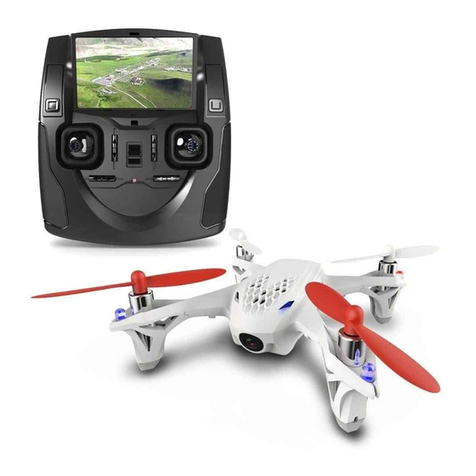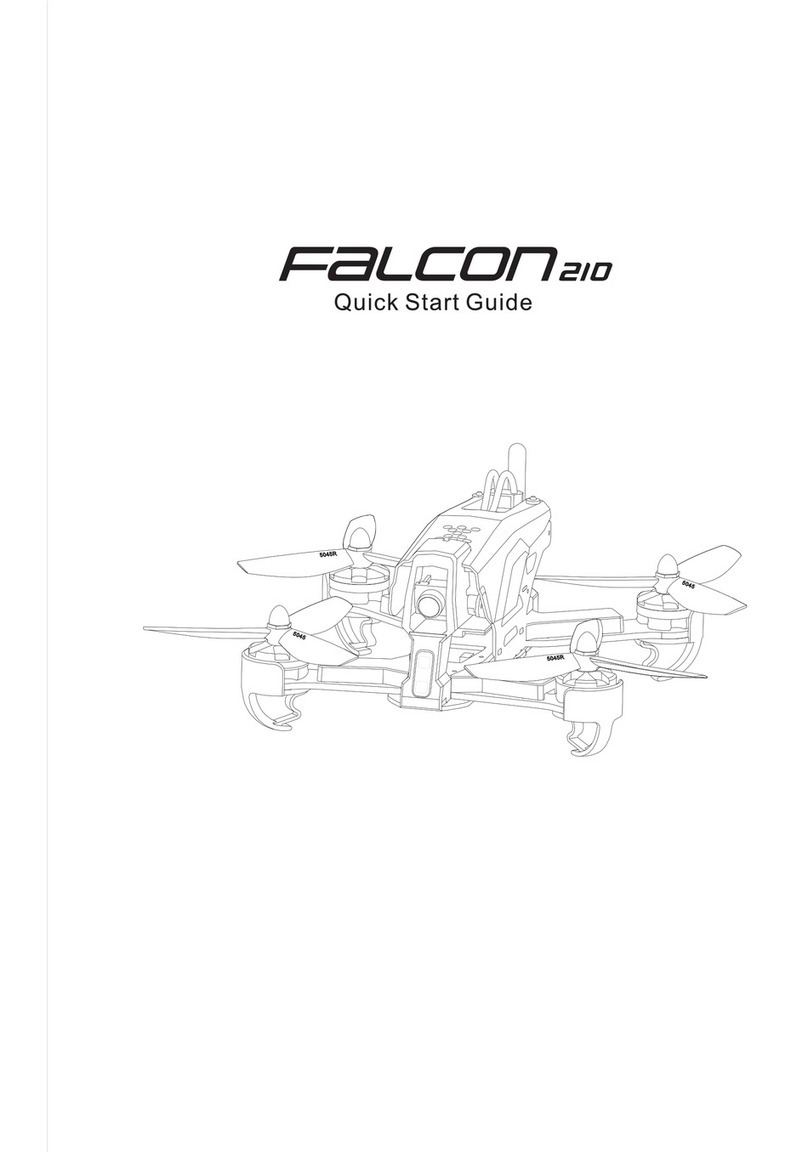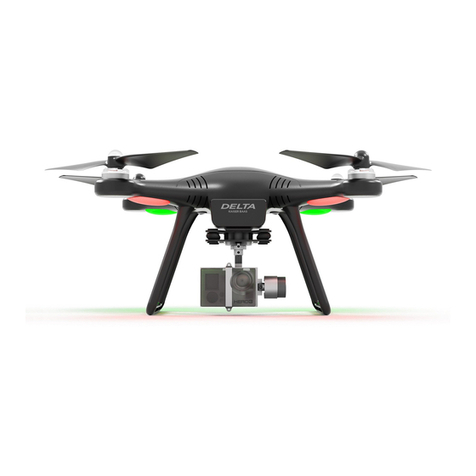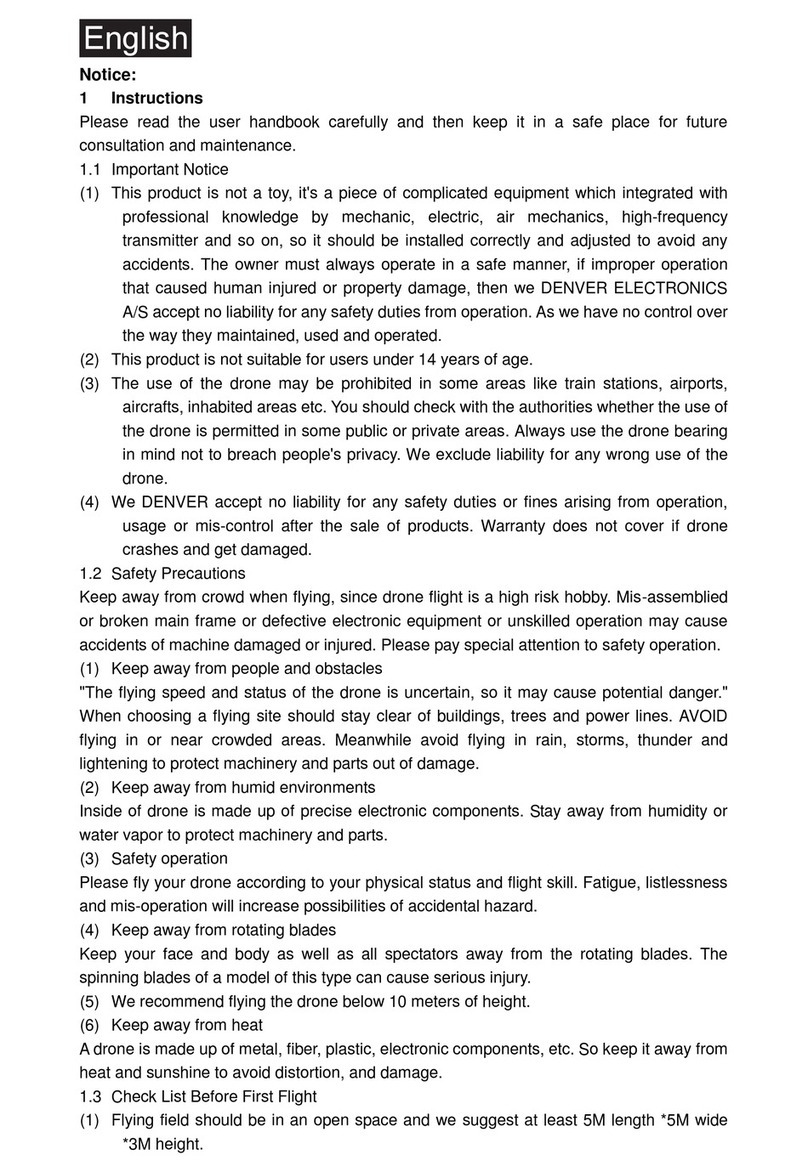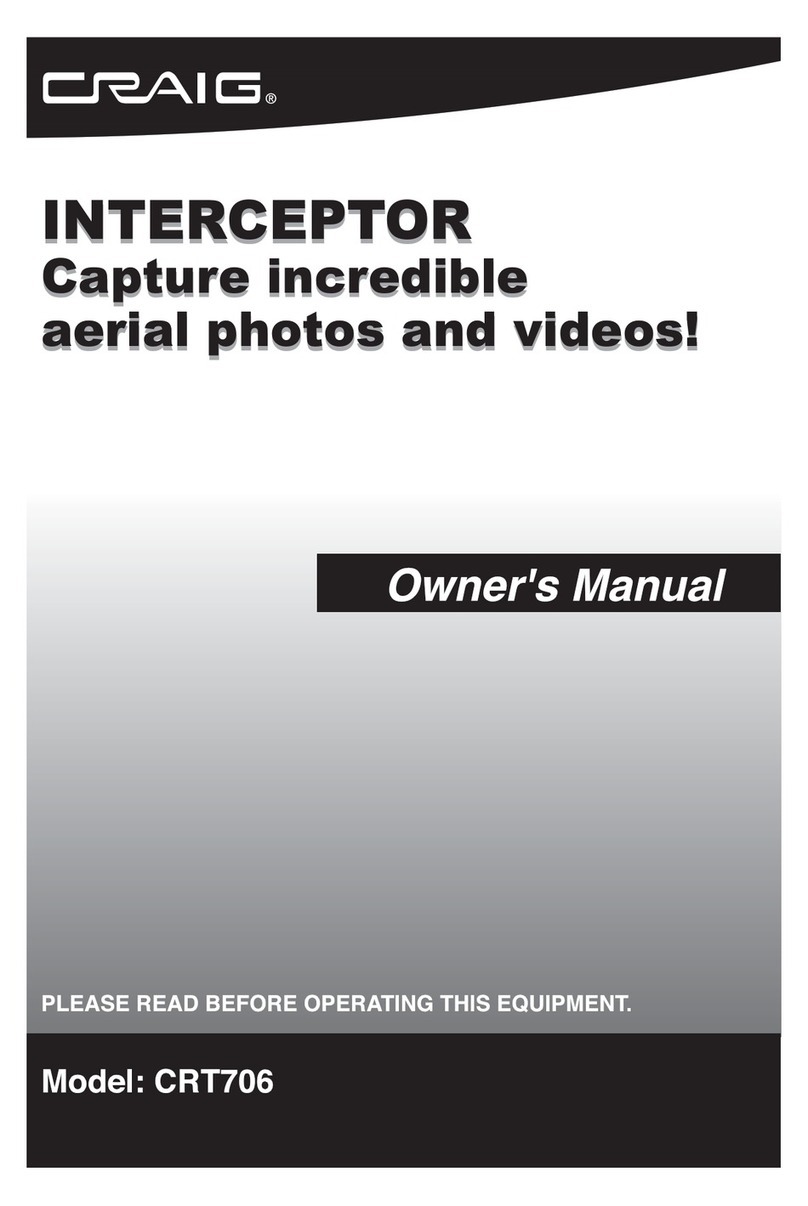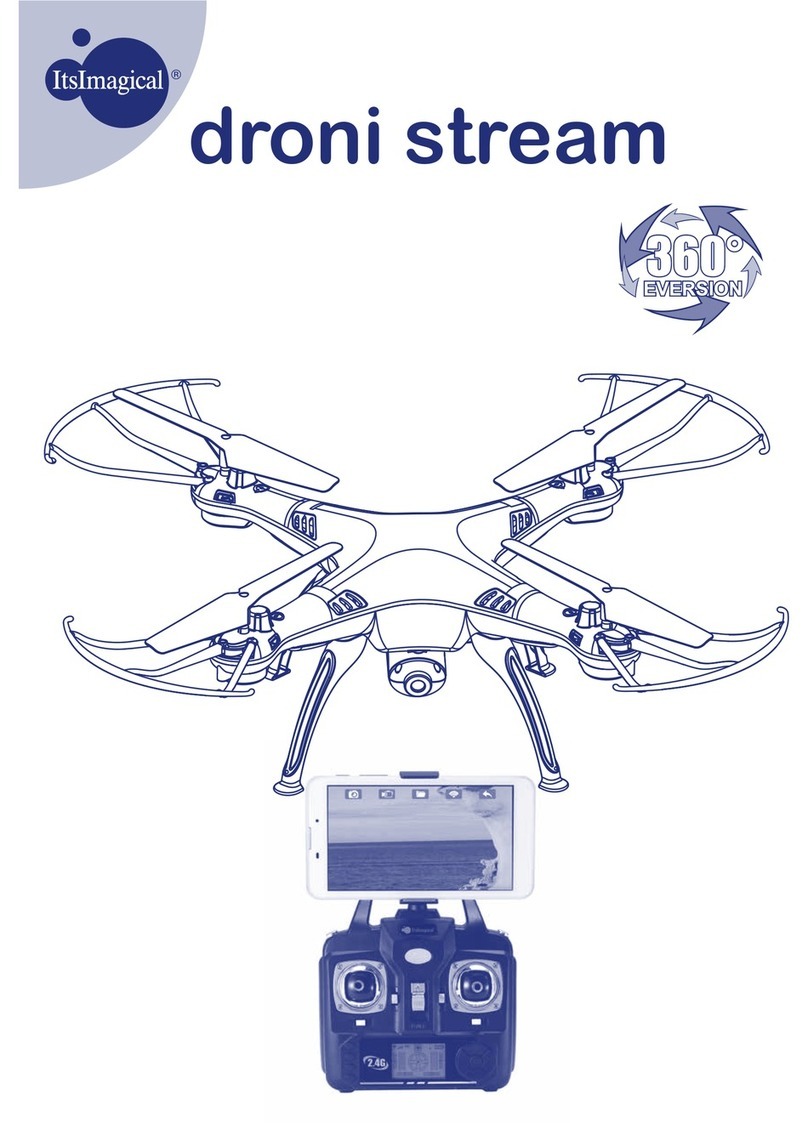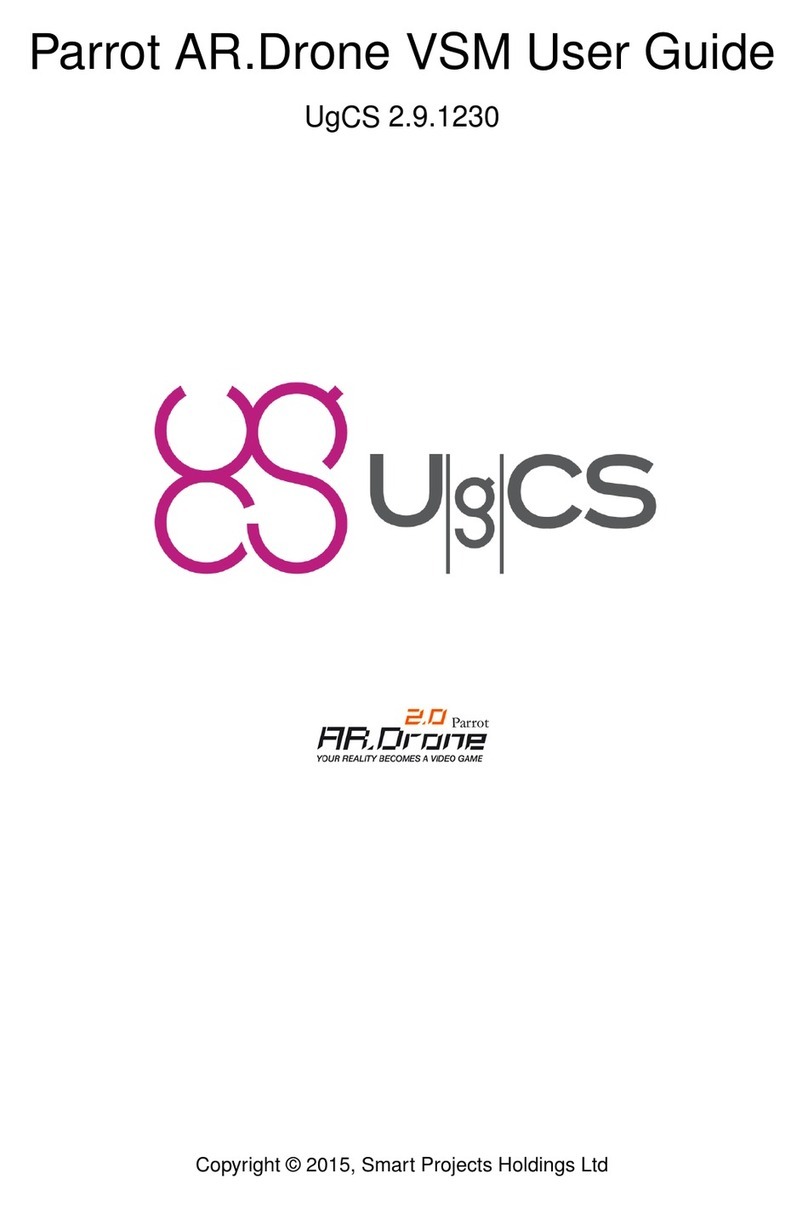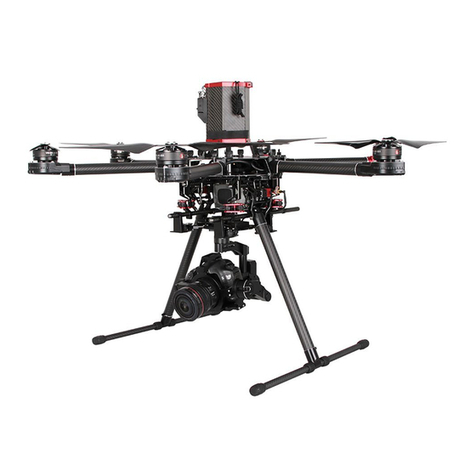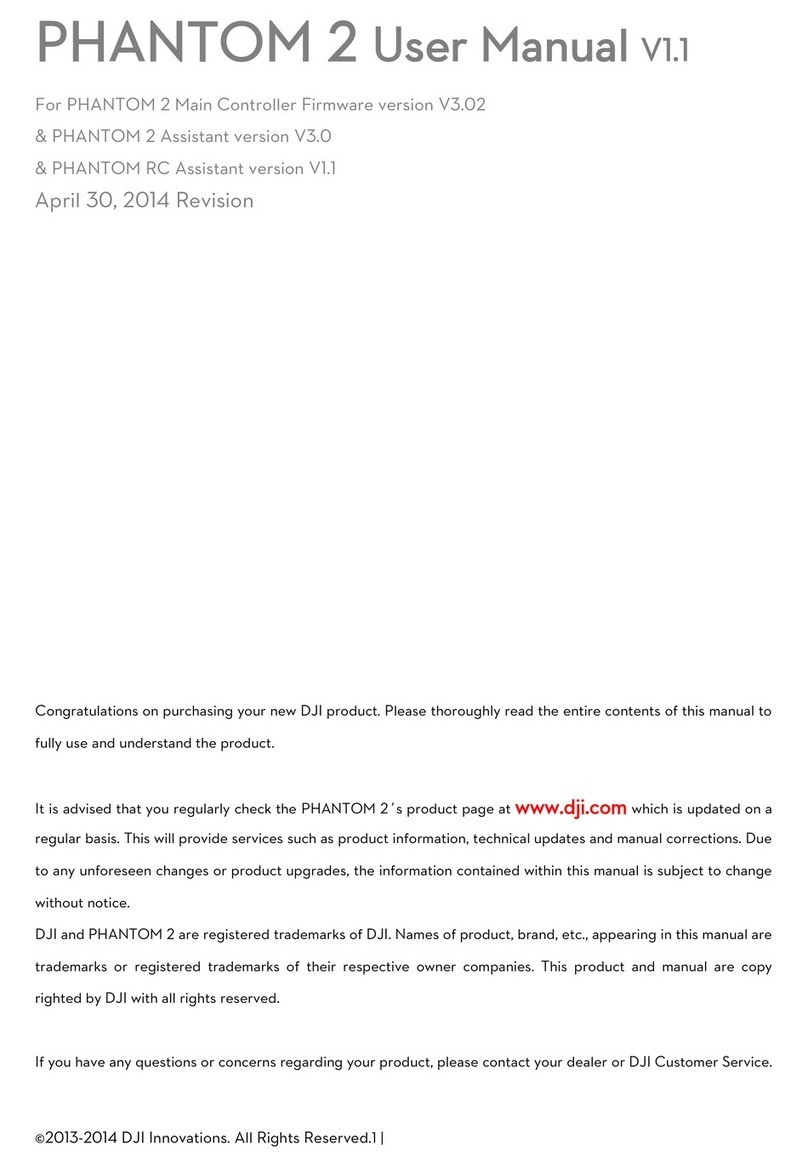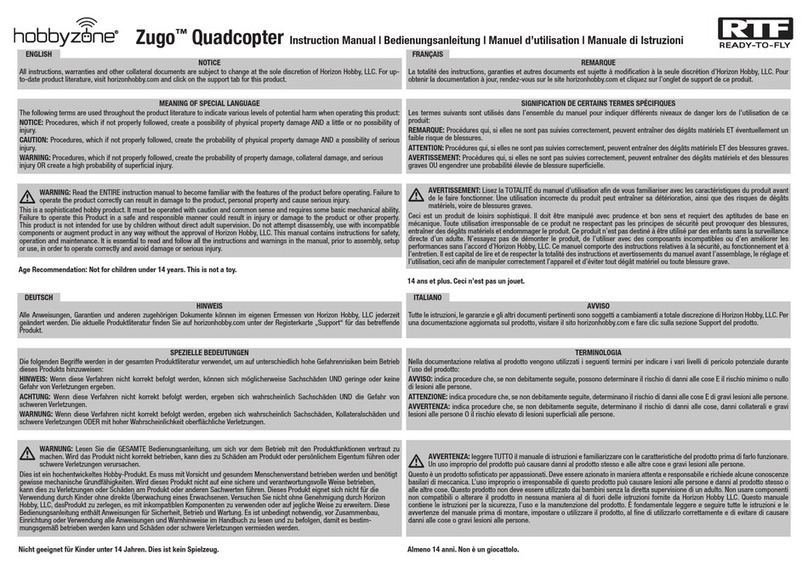3
Page
12. Therststart......................................................................................................................................................20
a) Starting ........................................................................................................................................................20
b) Calibration ...................................................................................................................................................21
c) Starting rotors and landing with a button.....................................................................................................21
d) Flight movements ........................................................................................................................................22
e) Headless mode function..............................................................................................................................22
f) Switch LEDs on and off ...............................................................................................................................23
13. FPV operation....................................................................................................................................................24
a) General information.....................................................................................................................................24
b) Loading the app...........................................................................................................................................24
c) Prepare model for takeoff............................................................................................................................25
d) Basic app features.......................................................................................................................................25
e) App controls.................................................................................................................................................28
14. Operating quadrocopter using your smartphone ...............................................................................................29
a) Take/view pictures or videos........................................................................................................................29
b) Operation using the controls of your app.....................................................................................................30
c) Additional app controls ...............................................................................................................................31
d) Control with the position sensors of the smartphone...................................................................................33
15. Maintenance, Servicing and Repair...................................................................................................................34
a) Regular Cleaning.........................................................................................................................................34
b) Replacing the rotors ....................................................................................................................................34
16. Disposal.............................................................................................................................................................35
a) Product ........................................................................................................................................................35
b) Batteries ......................................................................................................................................................35
17. Declaration of Conformity (DOC).......................................................................................................................35
18. Technical data....................................................................................................................................................36
a) Transmitter...................................................................................................................................................36
b) Quadrocopter...............................................................................................................................................36
c) Wi-Fi ............................................................................................................................................................36
d) Camera........................................................................................................................................................36
e) Flight battery................................................................................................................................................37
f) USB battery charger....................................................................................................................................37
g) General information.....................................................................................................................................37


